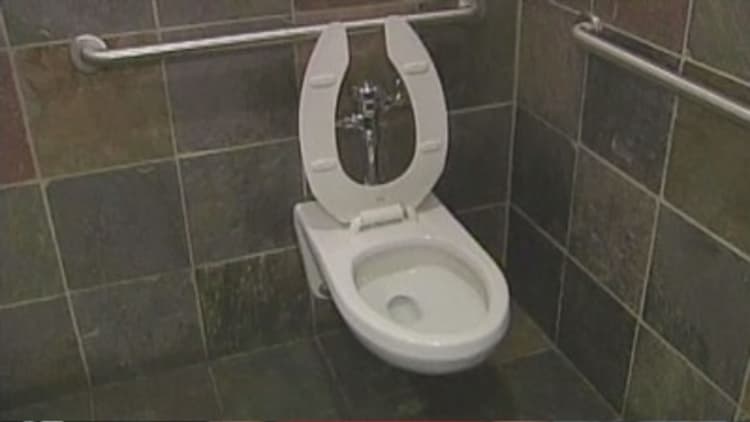
Los Angeles may soon be flush with a new water supply — and it's not what you may think.
The Metropolitan Water District, Southern California's largest water importer, is moving toward a "toilet to tap" program that could eventually result in human wastewater being transformed into drinking water. The concept behind "toilet to tap" is that the same purification that takes place when water moves through the earth, lakes or other natural features can be replicated in a man-made system.
A plan under consideration could reduce the region's dependence on imported water and purify treated wastewater through a series of advanced techniques.
"We're thinking it would serve Los Angeles County, Orange County and potentially San Bernardino County," said Debra Man, assistant general manager and COO of the water district, which serves a six-county area and nearly 19 million people. "We're talking about a regional program and it could afford us some cost efficiencies because of the economies of scale."
Plans call for the water agency to initially use the recycled water to recharge groundwater basins, but "down the road" there could be what's known as a "direct to potable" reuse, according to the district.
The proposal has been under consideration for months and would start with "a demonstration project" to take treated wastewater coming from the Los Angeles County Sanitation District (LACSD) and purifying it.
"We are going to be providing (treated wastewater) to them essentially at no cost," said Robert Ferrante, the sanitation district's assistant chief engineer. "They are taking a large part of capital and the bigger money side of it."
The water agency's full board is expected to vote on the pilot project on Nov. 10. It may eventually look to fund a portion of the project through state or federal funds, according to Man.
When completed, the water purification project could cost upwards of $1 billion. A similar water recycling plant at the Orange County Water District, which has been operational since 2008, cost more than $620 million, including a recent upgrade.
Under the plan, the initial phase would involve a 1 million-gallon-per-day demonstration plant adjacent to the L.A. County's wastewater treatment in Carson.
The water district said the first operational phase of the project would produce 67,000 acre-feet (roughly 21.8 billion gallons) of recycled water annually and pipe the water to groundwater basins in L.A. and Orange counties.

Later stages could see the project producing up to 168,000 acre-feet (about 54.7 billion gallons) per year of purified water.
"This is a huge step for them to embark on a new path because they have historically been all about imported water," said Melissa Meeker, executive director of the WaterReuse Association, a trade group that promotes water reuse. "It's such a large entity and large supplier to so many people in Southern California."
The metro water district imports a large portion of its water from the Colorado River and Northern California to supplement local supplies.
With California in its fourth year of severe drought, there's been more interest in water recycling projects — from San Diego to the San Francisco Bay area. After completion, the project would be the world's largest water purification plant. Currently, Orange County operates the world's largest water recycling plant, in Fountain Valley, California.
"There's a lot of interest in capturing and reusing recycled wastewater in the state," said Ellen Hanak, director of the Public Policy Institute of California's Water Policy Center.
However, Hanak said water recycling is "not completely drought-proof. In a severe drought like this one, people conserve a lot — and the more you conserve on your indoor use, the less goes to the wastewater treatment plant."
Ferrante, the L.A. County sanitation official, said his agency has seen a 20 percent reduction in wastewater flows since 2005 coming to the sanitation district. "The bulk of that is residential — your low-flush toilets, your low-flow showerheads and other things."
Although direct-to-potable reuse for drinking water is already underway in Texas, the "toilet to tap" program is limited in California because of state regulations. Most of the recycled water from existing California recycled water plants now goes into groundwater storage basins or reservoirs.
"Fundamentally, people like environmental features, so if they know there's a lake or a reservoir or the groundwater that it goes into, that makes them feel more comfortable," said Meeker. "But the reality is you can get that same treatment in a tank or anything else."





